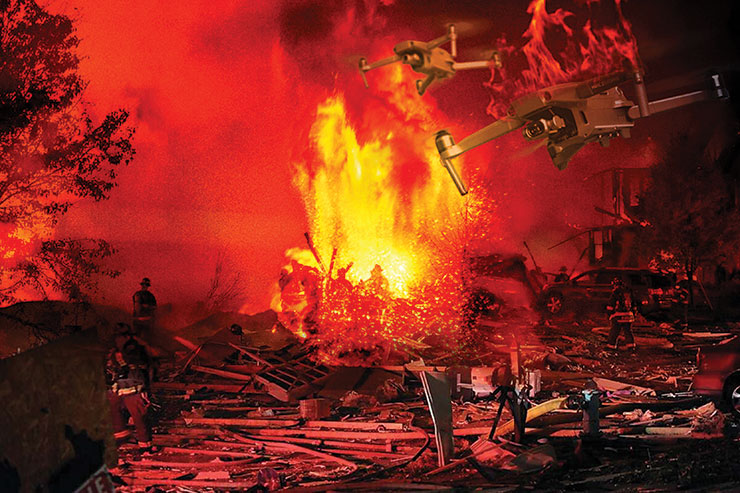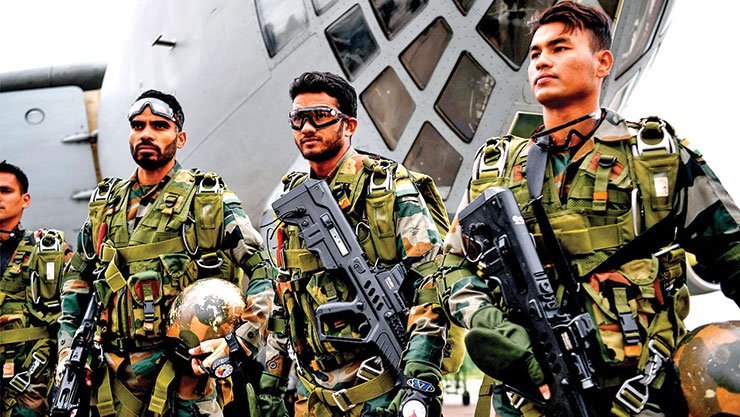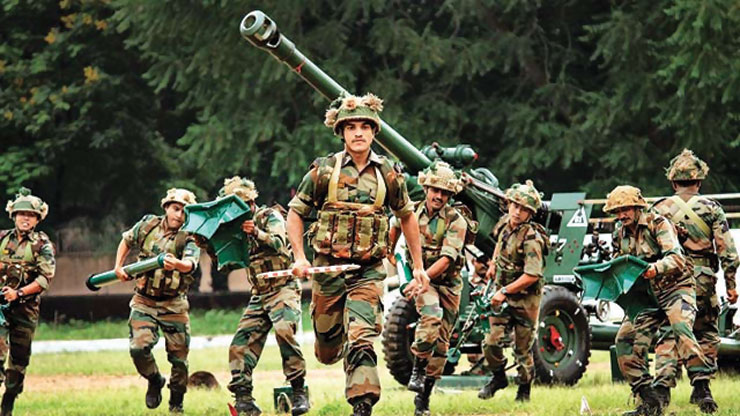
In 1758, the Maratha Empire defeated the Afghans and captured Lahore, bringing Punjab briefly back under Hindu rule after a gap of nearly 800 years. After the Marathas planted their flag on the walls of Attock on Punjab’s northern border, the Maratha commander Raghunath Rao wrote this memorable line to his emperor, Peshwa Balaji Baji Rao: “Give me the freedom and I’ll leap across the walls of Attock.” And he added: “We have decided to extend our rule up to Kandahar.”
This was a significant declaration of intent because Attock was a frontier city, and the Marathas were contemplating the re-conquest of Afghanistan, which was called Gandhar in ancient times. Unfortunately, their grand plan could not take shape because of wars with the English, which ultimately extinguished the Maratha Empire in 1818.
It has often been said that India has historically lacked a strategic culture or an indigenous military doctrine. However, this is not correct. Raghunath Rao’s statement shows that Hindus are not lacking in killer instinct or the will to expand the country’s land borders beyond the core of Aryavarta. In fact, every time India – or large parts of the country – was united under a powerful empire, it embraced the concept of strategic expansion. The three prime examples are the Mauryan Empire (322 BCE -185 BCE), the Gupta Empire (319 CE – 467 CE) and the Chola Empire (300s BCE–1279 CE), the last of which expanded Aryavarta to Southeast Asia as part of an encompassing strategy to secure its trade routes.
Military strategy under Indian secularism
Independent India’s obsession with peace and its appeasement of diehard enemies resulted in considerable loss of territory, military setbacks and erosion of national security. This was inevitable because secular Indians – who replaced the retreating British – had acquired a defeatist mentality after nearly 200 years of European rule. This defeatism was of such ridiculous proportions that Prime Minister Jawaharlal Nehru believed that just because India had no intentions of invading other countries, New Delhi could avoid war.
The utter lack of grasp of geopolitics was the reason that today India stands alone in a singular category of a large country that has allowed a small and dirt-poor country like Pakistan to grow into a troublesome military rival armed with nuclear weapons.
Colonel (R) J.K. Achuthan of the Indian Army explains the conundrum: “Imperial Rome ruled much of the Western world and the Mediterranean rim for centuries during ancient times, simply because it had a very clear war doctrine that did not tolerate the emergence of any other military power in its neighbourhood. We are having problems with Pakistan mainly for this reason, because from the 1980s onwards we have allowed it to emerge unchecked as an inimical military power, which is seething with a paranoid revenge syndrome and aspiring to attain military parity with India.”
Military doctrine reflects the state of the nation and cannot be divorced from it. For instance, the descent into the defensive mindset of the 1990s happened when India was beset with coalition politics. India was overrun by leftist and liberal leaders such as I.K. Gujral and Mulayam Singh Yadav who were sympathetic towards Pakistan. Gujral, in fact, made unilateral concessions to Pakistan and wound up highly prized intelligence assets in Sindh and Balochistan because of his view that “older brother” India must be magnanimous and generous towards Pakistan, the younger one.
However, this was construed as Hindu weakness, which emboldened the Pakistanis to prop up terrorist movements in Kashmir and Maoist-infested areas. The Kargil War of 1999 was also a result of the Pakistani cowboy generals’ perception of India as weak. If anything good came out of that conflict – and the attack on the Indian Parliament two years later – it was the consensus among India’s political and military leadership that Pakistan would no longer be granted concessions.
Another factor transforming the country’s strategic culture is India’s emergence as a powerful economy with an increasingly wealthy, assertive and aspiring middle class. New Delhi now sees itself as a key member of the global order. Pakistani military sociologist Ayesha Siddiqa writes in South Asia Journal: “Much of this change is linked with India’s growing desire to establish itself as a global power. The upcoming and affluent middle class and the Indian diaspora have a relatively aggressive stance so far as national power is concerned, which adds to the military’s relative influence.”
The 2003 nuclear doctrine, in which India declared that it would launch a “massive” retaliatory strike if Pakistan lobbed even a single battlefield nuke at India’s armed forces was an indication of New Delhi’s hardening strategic posture.
Indigenous military doctrine
On March 6, 2021, at the Combined Commanders’ Conference held in Kevadia, Gujarat, Prime Minister Narendra Modi stressed the “importance of enhancing indigenisation in the national security system, not just in sourcing equipment and weapons but also in the doctrines, procedures and customs practised in the armed forces”.

What is so important about a doctrine that it invited the Prime Minister’s comment at a premier brain-storming event of the Military Commanders from the three Services?
Having a military doctrine is critical for national security because it provides clear guidelines for the political and military leaderships for tackling national security challenges. It provides a set of ideas on how a country plans to wage war – and more importantly deter war. A written document also sends a message to other countries – including partners and adversaries – that the Indian military has a plan of action and will act on it when the occasion demands.
The absence of a proper war doctrine, especially during the Jawaharlal Nehru years, made India fall into the trap of waging limited wars, thereby ceding the advantage to its adversaries.
For an indigenous military doctrine to take shape, India’s military and political leadership must step away from the past and look at a long-term plan to systematically build military capabilities in tune with our geopolitical aspirations. A military doctrine must have definite goals, and one of the primary goals should be that Pakistan and China cannot be allowed to remain permanent roadblocks in India’s quest for supremacy.
Joint approach
The first clean break from the past was achieved in the second edition of the Joint Doctrine of the Indian Armed Forces (JDIAF-2017) which stated: “India has moved to a proactive and pragmatic philosophy to counter various conflict situations.” It left no doubt that both the political leadership and the military brass were moving away from strategic timidity and embracing the concept of strategic offensive.
The document made it amply clear: “Conflict will be determined or prevented through a process of credible deterrence, coercive diplomacy and conclusively by punitive destruction, disruption and constraint in a nuclear environment across the Spectrum of Conflict.”
Two years later, India showed the world that it was willing to walk the talk. In response to a Pakistan-sponsored terrorist attack on an Indian paramilitary convoy that led to the death of 40 soldiers, the Indian Air Force launched a 14-plane strike on a terrorist training camp in Balakot in Pakistan’s Khyber-Pakhtunkhwa province.
With over 300 terrorists dead, the attack was a major landmark as it showed India had made a decisive break from its defensive and reactive mindset. This was a welcome development because in previous conflicts the defensive approach had prevented the country’s armed forces from performing to their true potential.
The Indian Army’s Land Warfare Doctrine 2018 adds further clarity to JDIAF-2017. It is mentioned that while “conventional war will remain central in the construct of the spectrum of operations, the Indian Army will continue to prosecute effective counterinsurgency/counter-terrorism operations to ensure deterrence through punitive responses, against state-sponsored proxy war”.
All-angles offensive
Having a long-term plan to systematically build military capabilities in tune with geopolitical aspirations is one thing. But a military doctrine must have definite goals. Since war is total and our adversaries are employing all sorts of weapons -including military, economic, intelligence, propaganda, cyber, corporate and religious assets-into the theatre of warfare, India too must be prepared for an all-angle attack.
In sync with a well-defined war doctrine, there should be a consensus among the military brass and the political leadership about the need to take out the enemy before he starts the war. Since Pakistan and China are clearly planning their next war, India’s leadership must not wait for the enemy to start a war; we must defeat Pakistan within Pakistan and China in China. Indian leaders should internalise the mindset of Roman general and censor Marcus Cato who repeatedly spoke in the Roman Senate about the need to destroy its prime rival Carthage: “The Carthaginians are already our enemies; for he who prepares everything against me, so that he can make war at whatever time he wishes, he is already my enemy even though he is not yet using arms.”

In this backdrop, India must adopt an all-axis attack on its enemies:
- The logical conclusion of surgical strikes is that India must fight future battles inside Pakistan. The country cannot afford to allow Islamabad’s low-cost high-intensity terror warfare against India to continue forever. The costs are simply too high as our paramilitary and military forces are being tied up in internal security, impacting their morale and war-fighting capacity. Separatist forces in Balochistan, Sindh, Khyber-Pakhtunkhwa and Punjab – the Pakistani heartland – must be supported to engineer a civil war and hasten Pakistan’s breakup.
- In future conflicts, even if they are retaliatory strikes for Pakistan-sponsored terrorism, India should target Pakistani civilian infrastructure. The Tarbela Dam, Islamabad airport, Karachi harbour, telecommunications systems, power plants and the canal network should be demolished with cruise missile strikes. If Pakistan retaliates, it knows the price would be the end of Pakistan as a country. American strategic analyst Ralph Peters writes: “Pakistan’s leaders know full well that a nuclear exchange would leave their country a wasteland. India would dust itself off and move on.”
- India must assume that the next war will be a collusive two-front war. Keeping that in mind, it should prepare to launch a holding operation against China, while simultaneously conducting an offensive operation against Pakistan aimed at possibly nuclear-bombing the terrorist nation from the face of the earth.
- Since India is up against two adversaries possessed by implacable hatred that springs from their ideologies – radical Islam and communism – our entire security apparatus must be in war mode 24/7.
- India should stop being a status quoist power vis-a-vis China, and occasionally make moves that rattle the Chinese leadership. For instance, it should provide nuclear weapons to Vietnam as a quid pro quo for Beijing’s massive help in the nuclearisation of Pakistan. This will also make Vietnam immune to Chinese border aggression.
- The Indian Army brass continues to favour large military formations tasked with punitive incursions into enemy territory. According to Carnegie India, “This doctrine is orthodox in its preference for large combined-arms army formations, usually operating with minimal coordination with other services and relatively autonomously from its political masters. It is offensive in its military aims of imposing a punitive cost on the enemy – usually in the form of capturing territory for the purposes of gaining leverage in post-war negotiations – even if it is usually deployed in the service of a strategically defensive policy of maintaining the territorial status quo.” While such a strategy is useful for keeping Pakistan on tenterhooks and makes it waste scarce resources on defensive measures, India needs to boost its capabilities in surgical strikes. Large-scale and extended wars are unlikely, so India must have more options when it comes to launching the next Uri or Balakot. Weapons for special forces troops and specialised night-fighting helicopters for low-level entry and egress are the areas where money could be better spent.
- Intelligence gathering in hostile territory and analysis both need to be ramped up to preempt and thwart enemy plans. Says Colonel Achuthan: “The armed forces’ intelligence organs have to function on a war footing even during peacetime. Only then we can escape getting ‘Kargilled’, as our enemies take advantage of every opportunity of our perceived weaknesses. To overcome our present-day lacunae, the intelligence branch of a Divisional HQ should be headed by a full colonel who should be Higher Command Course qualified and this same branch should be headed by an NDC-qualified brigadier at the Corps HQ. Only this measure will improve the quality of analysis of our foes’ intentions, and no commander can afford to disregard such experienced and high-quality advice and remedial options.”
- And of critical importance is the need to clip the wings of internal enemies which includes a sizeable section of the media which are loyal to China and the West; a large population of Islamists who are the eyes and ears of Pakistan in India; NGOs that scuttle critical defence infrastructure or move the courts to slow India’s weapons purchases; and missionaries working in cahoots with Western governments (as in the blocking of Vizhinjam Port) to stop India’s rise.
Endgame
Defending India may seem like a security nightmare, but the reality is the enemy can succeed only if you give him the space to operate. With oceans on three sides and mountains up north, it is one of the most defendable places in the world. Historically, the enemy has been able to breach the land and sea borders only when India was divided into numerous kingdoms and the internally focused rulers either neglected national defence or lacked the resources to do so. The scenario is entirely different today with a nationalist government in power in Delhi for the first time in centuries. Plus, Indians now also have a historical perspective of what went wrong in the previous 1,000 years that led to invasion and colonisation by foreigners who brought with them ideologies that were incompatible with India’s liberal outlook. Knowing the enemy is more important than guessing his weapons, numbers or intentions. Most Indians are intensely aware of the threat posed by China and Pakistan (and to some extent the Christian West) along with their friends and supporters in India. Simply by focusing on these inimical forces, the threat can be neutralised.
– The writer is a globally cited defence analyst. His work has been published by leading think tanks, and quoted extensively in books on diplomacy, counter terrorism, warfare and economic development. The views expressed are of the writer and do not necessarily reflect the views of Raksha Anirveda








